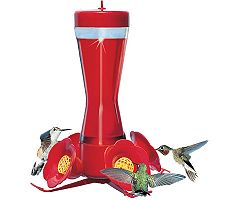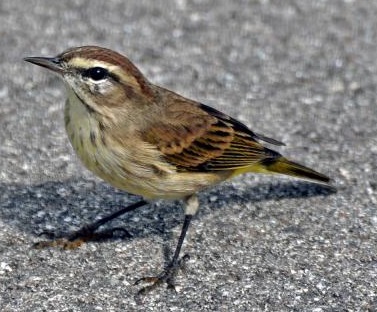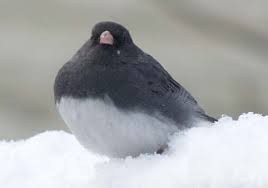Blog - General
Daves September Bird Chatter 2014
It seems as if we were just celebrating the arrival of our summer Neo-Tropical migrant birds, and already we’re telling them good-bye till next spring… The avian calendar is swift. We began receiving reports of hummingbirds at feeders in early August. This will continue to be the case through most all of September, so there is plenty of time to get a hummingbird feeder out and enjoy them as they pass through.
swift. We began receiving reports of hummingbirds at feeders in early August. This will continue to be the case through most all of September, so there is plenty of time to get a hummingbird feeder out and enjoy them as they pass through.
Although it has not been documented, over the past few years we have had reports of hummingbirds nesting in the Lincoln area. One in particular had a pair at the nectar feeders all summer, and now seems to have a family draining several feeders. Although they do nest along the Missouri River, it is uncommon for them to nest out here on what once was the tall grass prairie.
The Warbler migration will ramp up in September and you should test yourselves at identifying them. Remember, some fall birds do not look like they did in the spring and it will challenge you to sort them out. The saying “confusing fall warblers”, presents a problem, at times, for the most experienced birders. This is one of several good reasons to have a good field guide and familiarize yourself with it. Warblers also have a set pattern of migration each year, as certain ones seem to leave first and there are several hardy varieties that will still be passing through in October into early November. Occasionally a few hardy souls will winter at a good food source and make it through until spring.
will challenge you to sort them out. The saying “confusing fall warblers”, presents a problem, at times, for the most experienced birders. This is one of several good reasons to have a good field guide and familiarize yourself with it. Warblers also have a set pattern of migration each year, as certain ones seem to leave first and there are several hardy varieties that will still be passing through in October into early November. Occasionally a few hardy souls will winter at a good food source and make it through until spring.
The last of our local nesters, Waxwings, Doves and Goldfinches, will be brooding their young this month and the fall molt will be on. This means that the male Goldfinch will soon return to its basic olive brown color much like the female until next spring.
If you enjoy hawk watching, this is the time of year to keep your eyes on the skies. Sometimes we are fortunate enough to see huge flocks of migrating hawks soaring high above us. These are called “Kettles” and there can be several varieties drifting on the thermals in lazy circles, slowly and effortlessly heading to warmer climates. Although hawk migration can be seen just about anywhere, one of the best places is at the Hitchcock Nature Center in Crescent, IA just minutes north of Omaha. Hawk Watch runs through October. In 2009, 10,638 birds of prey were counted. This included a variety of hawk species, eagles, falcons and Ospreys. Visit Hitchcock Nature Center for more information or ask us at Wild Bird Habitat.
Although our Neo-Tropical birds will soon be gone until next year, there is plenty of excitement to come. The Northern birds will soon be replacing them. Our first arrivals could be the red breasted nuthatch, should it choose to come south this winter. I just recently saw one at my feeders. Soon the Juncos will be arriving along with many migratory native sparrows. Pine Siskins could become abundant this fall and winter at the feeders and maybe crossbills and Purple Finch will grace our snow covered yards. It’s hard to predict just how far south these irruptive bird species will travel in search of food.
be the red breasted nuthatch, should it choose to come south this winter. I just recently saw one at my feeders. Soon the Juncos will be arriving along with many migratory native sparrows. Pine Siskins could become abundant this fall and winter at the feeders and maybe crossbills and Purple Finch will grace our snow covered yards. It’s hard to predict just how far south these irruptive bird species will travel in search of food.
This will be the end of the molting period as the birds will again be returning to normal. Some will be clad in their basic winter plumage while others will have bright new feathers that will carry them through the migration period and the upcoming winter season. The bald Cardinals and Blue Jays will again be carrying a “full head of feathers”. Their quickness and flying dexterity will have returned.
If you don’t feed year around, this is the time to be getting the feeders ready. Many resident birds are establishing winter feed sources and it won’t be too long before some of our Northern visitors will be arriving. You will also be noticing how many young birds have already assumed adult plumage. Our resident Goldfinches, who drift south for the winter, will soon be replaced by the Northern population of goldfinches that left our area last May.
Autumn Wing Tips
It may be a bit early to talk autumn, but fall begins in September.
¨ Fall clean-up is just around the corner. This year consider leaving some leaves under the shrubs. This leaf litter harbors insects and larvae that are wintering over. This provides beneficial foraging for birds during the winter and early spring. It will increase the bird activity in your yard and possibly attract some early migrants in the spring.
¨When gathering up fallen branches or limbs pruned from trees and shrubs, find a place in the corner of the yard to stack them in a pile. Brush piles make havens for birds to escape predators and provides shelter from cold winds.
¨Water is essential for birds during the winter months. Easy access to water will help birds conserve energy in cold weather, and clean feathers provide better insulation. Make plans now for a source of water in your backyard for the birds this winter. Wild Bird Habitat has heated bird baths and a full line of thermostatically controlled bird bath heaters from 60 watt to 500 watt. Pond heaters available by special order.
